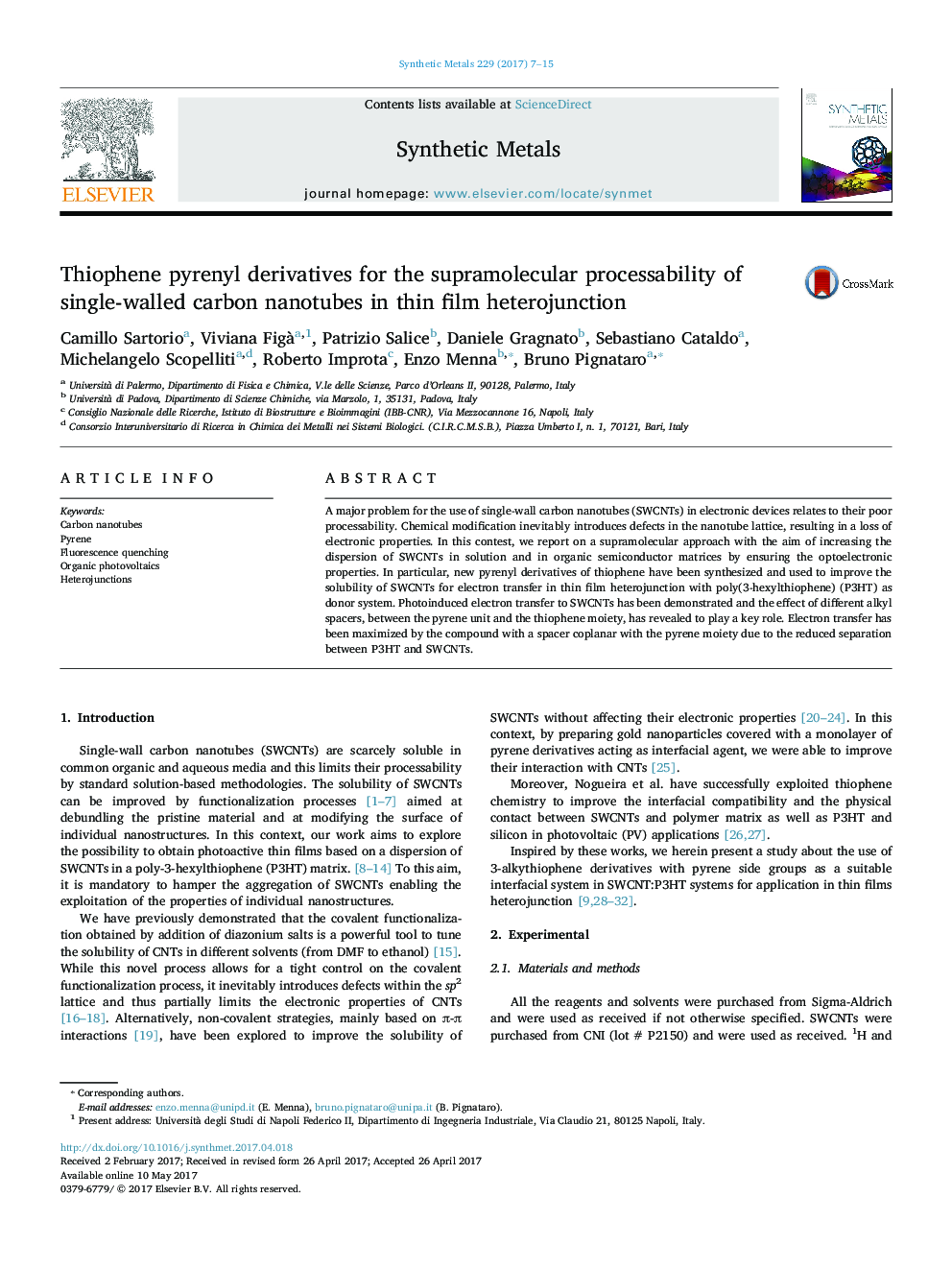| کد مقاله | کد نشریه | سال انتشار | مقاله انگلیسی | نسخه تمام متن |
|---|---|---|---|---|
| 5435430 | 1509349 | 2017 | 9 صفحه PDF | دانلود رایگان |
- Four different new pyrenyl derivatives have been interfaced in donor-acceptor systems.
- Modified pyrene with thiophene-terminated alkyl chains improves CNTs/P3HT electron transfer.
- Pyrene with coplanar alkyl chain exhibited good processability and electron transfer properties.
A major problem for the use of single-wall carbon nanotubes (SWCNTs) in electronic devices relates to their poor processability. Chemical modification inevitably introduces defects in the nanotube lattice, resulting in a loss of electronic properties. In this contest, we report on a supramolecular approach with the aim of increasing the dispersion of SWCNTs in solution and in organic semiconductor matrices by ensuring the optoelectronic properties. In particular, new pyrenyl derivatives of thiophene have been synthesized and used to improve the solubility of SWCNTs for electron transfer in thin film heterojunction with poly(3-hexylthiophene) (P3HT) as donor system. Photoinduced electron transfer to SWCNTs has been demonstrated and the effect of different alkyl spacers, between the pyrene unit and the thiophene moiety, has revealed to play a key role. Electron transfer has been maximized by the compound with a spacer coplanar with the pyrene moiety due to the reduced separation between P3HT and SWCNTs.
303
Journal: Synthetic Metals - Volume 229, July 2017, Pages 7-15
